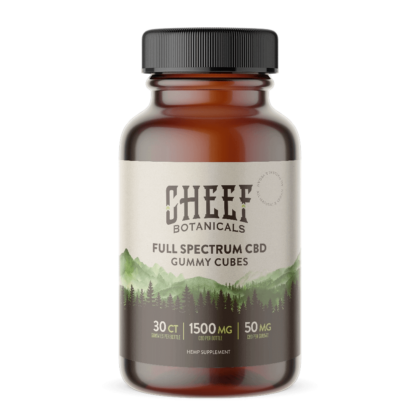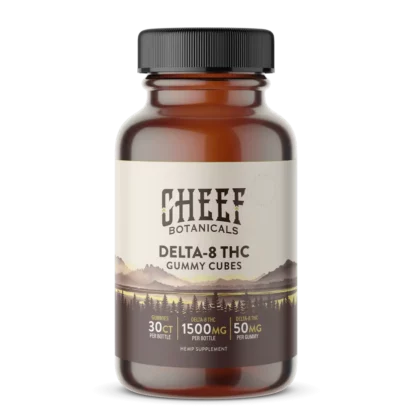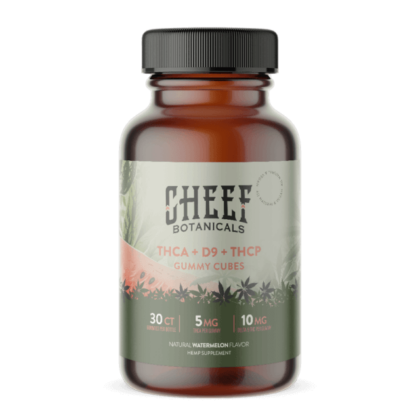- 🔥Sale
-
Shop
-
By Benefit
-
Discover
- Which Product Is Right For Me?
Maintaining Homeostasis in the Human Body [Can CBD Have an Impact?]
We are all just searching for balance in our lives. As the great novelist Margaret Atwood once wrote, “I like a balanced universe.” The same is true for our bodies; they are systems which require balance and harmony in order to function properly. Consequently, homeostasis is how our bodies induce and maintain this system of balance.
Homeostasis in the Human Body
Homeostasis is an important concept in health and wellness. It originated with 19th-century French physiologist Claude Bernard. During this time he stated that the stability of the body’s internal environment is necessary for life.
However, the actual term was coined in 1926 by the American scientist Walter Cannon in his landmark book Organization for Physiological Homeostasis. In this text, he observed that the human body has various ways to maintain a consistent internal temperature despite outside variations.
So let’s take a moment to formally define homeostasis. It is how the human body maintains relatively stable conditions within its internal environment while changes occur both inside and outside the body.
These conditions, all of which are necessary for life, include:
- Body temperature
- Blood pressure
- Lung pressure
- Sodium, potassium, zinc, and calcium concentrations
- pH balance
- Hormone levels
Whereas the internal or external changes may include:
- Eating
- Exercise
- Pregnancy
- Illness
- Injury
- Overall stress
- Fluctuations in ambient temperature
Example of Homeostasis in the Body
One of the most common examples of homeostasis in the human body is the regulation of temperature. Humans require a consistent internal temperature of 98.6 F (or 37 C). This temperature can vary a little bit, but it must stay within the homeostatic range.
Anything below 95 F (35 C) is hypothermia. Anything above 100.4 F (38.0 C) is a fever. Therefore, the homeostatic range for body temperature is 95.1 F to 100.3 F.
The part of the human brain which oversees this homeostatic temperature range is known as the hypothalamus. If it senses a significant drop in temperature, then it sends signals to your muscles to shiver and constricts your blood vessels. This helps to keep your body from radiating heat.
However, if your body temperature gets too high, then the hypothalamus will send signals to your glands to induce sweating as well as expanding your blood vessels. This will help your body to eliminate some of the excess heat. In a nutshell, this is the process of maintaining homeostasis. Like the hypothalamus, the ECS operates by overseeing a homeostatic range.
Why is Maintaining Homeostasis Important?
From the very beginning, Claude Bernard states that the act of balancing these physiological conditions is necessary for life. It is useful to think of our bodies as a system of interlinking mechanisms, all of which need to operate under a set of specific conditions.
If these conditions are not met and maintained, then the system begins to malfunction. The further the internal environment diverts from normal conditions the more drastic the system will malfunction. For example, when you get cold at first you will only shiver but if the temperature continues to drop your body will go into severe hypothermia and eventually cardiac arrest.
Thanks to the hypothalamus and homeostasis our bodies stay within the proper homeostatic range, thus avoiding cardiac arrest. In 2015 an influential paper in Advances in Physiological Education broke the process of homeostasis down as follows:
- Stimulus – This is a change in the environment.
- Receptor – Site in the body that detects the stimulus.
- Control center – This is the part of the body that receives, analyzes, and responds to physiological signals.
- Effector – This is the part of the body that responds to the stimulus and attempts to maintain homeostasis.
- Feedback control – This is how the body regulates the degree of the response. Negative feedback shuts off the effector response whereas positive feedback increases the effector response.
As you can see, homeostasis is about maintaining stable conditions within the body so that its various systems can continue functioning properly. In fact, the term homeostasis comes from the Greek words for “steady” and “same”. This is because the human body has countless chemical reactions occurring within it at every moment. Furthermore, all these reactions need to occur within the homeostatic range.
Maintaining Homeostasis With The ECS
So, how exactly does the body govern all these different processes? How could all these different systems be effectively integrated? It seems impossible!
Enter the endocannabinoid system (ECS). This regulatory system oversees a wide variety of processes in the human body. The first components of the ECS were discovered in 1992 by Dr. Raphael Machoulam. At the time, he was researching the metabolic pathways of tetrahydrocannabinol (THC) when he accidentally stumbled across the ECS.
So what does the ECS do? Well, scientist Vincenzo Di Marzo summarized the primary functions of the ECS as: “relax, eat, sleep, forget, and protect.” This is a useful shortcut for understanding the ECS and distilling its essence down to the most basic concepts. However, to elaborate further, the ECS is responsible for:
- Pain response
- Inflammation
- Reward and motivation
- Appetite
- Digestion and metabolism
- Immune function
- Memory
- Pleasure and reward
- Regulation of body temperature
- Mood
Additionally, the ECS is a combination of three different components. Knowing these three different parts and how they work together will help you better grasp the concept of how CBD works with the ECS to help maintain homeostasis.
The 3 Components of the Endocannabinoid System
- Cannabinoid receptors – These are known as CB1 and CB2 receptors and are spread throughout the human body with significant concentrations in the brain and spinal cord.
- Endocannabinoids – These are cannabinoids that are produced naturally in the human body (they are also referred to as endogenous cannabinoids).
- Enzymes – These produce or break down cannabinoids and endocannabinoids.
So how does this all relate to homeostasis? Well, some of the most groundbreaking research into the ECS has been done by Dr. Ethan Russo, who in 2016 published a landmark paper that explicitly linked the proper functioning of the ECS with homeostasis. According to Dr. Russo, “The ECS […] can be thought of as a key mediator of physiological homeostasis [by] ensuring that various bodily systems function within tight parameters.”
As you can see, the ECS and homeostasis share a close relationship. In other words, if you have a healthy ECS, then you have a greater chance of reaching and maintaining a homeostatic state. In fact, the ECS is also referred to as a pro-homeostatic system in the scientific literature.
What is CBD?
So now that we have established the importance of a properly functioning ECS and homeostasis, let’s examine the significance of cannabidiol (CBD). This is an extract of the cannabis plant that belongs to the group of chemical compounds known as cannabinoids.
Besides the endocannabinoids mentioned above, there are also phytocannabinoids. These are extracted from cannabis plants and include CBD, THC, and many more. Phytocannabinoids, like CBD, exert profound effects on the ECS via activation of CB1 and CB2 receptors.
Visit our CBD edibles here to look at some tasty CBD products.
CBD & Endocannabinoids
It is useful to consider CBD in relation to the endocannabinoids that are naturally produced in the ECS, like Anandamide and 2-AG. In fact, CBD interacts extensively with these two endocannabinoids. Furthermore, the act of doing so positively affects the ECS and may help to maintain homeostasis. Let’s take a look at these special relationships.
Anandamide is an endocannabinoid that was discovered in 1992 by a Czech chemist named Lumir Hanus. It was named after ananda, the Sanskrit word for “bliss”. It is a key molecule for maintaining homeostasis. Anandamide is produced by an enzyme known as NAPE-PLD and is broken down by another enzyme known as FAAH.
Unfortunately, anandamide has a very short half-life. FAAH will break down the bliss molecule in 5 minutes or less. Anandamide activates mostly CB1 receptors, though it does exhibit activity with CB2 receptors as well.
Furthermore, Anandamide is absolutely crucial in the body for a variety of homeostatic functions, including:
- Pleasure and reward, including from exercise (this is where the phrase “runner’s high” comes from)
- Appetite and food intake
- Sleep cycles
- Pain relief
- Reproduction and ovulation (in females)
- Learning, including transferring short-term memory into long-term memory
- Inhibiting the growth of breast cancer cells
The second endocannabinoid that is crucial for homeostasis is 2-AG (short for 2-arachidonoylglycerol). It is much more prevalent; according to a 2005 study, there are 170 times more 2-AG than anandamide in the human body.
2-AG is the exact inverse of anandamide in that it primarily activates CB2 receptors while exhibiting some interaction with CB1 receptors. Furthermore, it is broken down by the enzyme MAGL (short for monoacylglycerol lipase).
The primary functions of 2-AG include:
- Regulating immune function
- Decreasing inflammation
- Acting as a neuroprotectant
- Bone health via the production of osteoblasts
- Regulating the balance of energy
Can CBD Help Maintain Homeostasis?
It definitely may! But it may do so in a variety of ways; both homeostasis and the ECS are enormously complex and intricate. CBD may induce homeostasis by increasing the levels of endocannabinoids.
Final Thoughts
In conclusion, remember that CBD may help maintain homeostasis, which may thereby increase overall wellness. A balanced body is a healthy body, and a healthy body is a happy body! More info here at Cheef Botanicals.


















